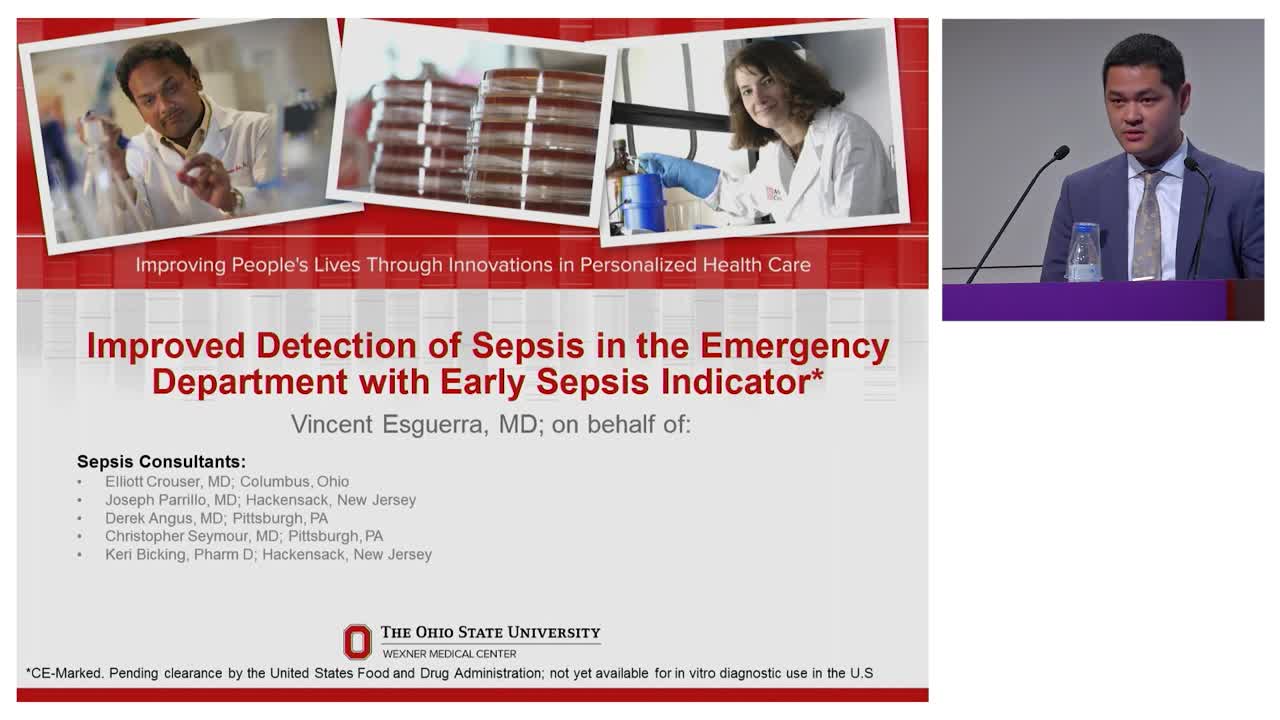Improved Detection of Sepsis in the Emergency Department
Sepsis is costly. It results in an overwhelming number of hospital deaths,1 and, at $20 billion a year, is the top healthcare expense in the U.S.2 Early sepsis identification and treatment—starting in the emergency department (ED)—strongly influence sepsis outcomes.
In this webinar, "Improved Detection of Sepsis in the ED with Early Sepsis Indicator", Dr. Vincent Esguerra highlights the current state of sepsis, and the role of cell morphology and volume changes in early sepsis identification in the ED. The discussion surrounds findings from a non-interventional, prospective feasibility study, featuring patients at two different EDs who had CBC tests performed upon presentation.
After viewing the webinar, you will be able to:
- Understand and define sepsis and its stages
- Identify current sepsis detection tools
- Explain nucleated blood cell morphology changes during sepsis
- Discuss how Monocyte Distribution Width adds value and enhances the ED standard of care for sepsis identification
Ideal For: Laboratory Technician, Laboratory Director, Medical Director, Pathologist, Physician
Presenter: Vincent Esguerra, M.D.
Dr. Vincent Esguerra is an assistant professor of internal medicine at the Ohio State Wexner Medical Center. He completed both his internal medicine residency and pulmonary critical care fellowship at Ohio State. His current research and clinical interests include sepsis, lung disease and early ICU rehabilitation.
 English
English


